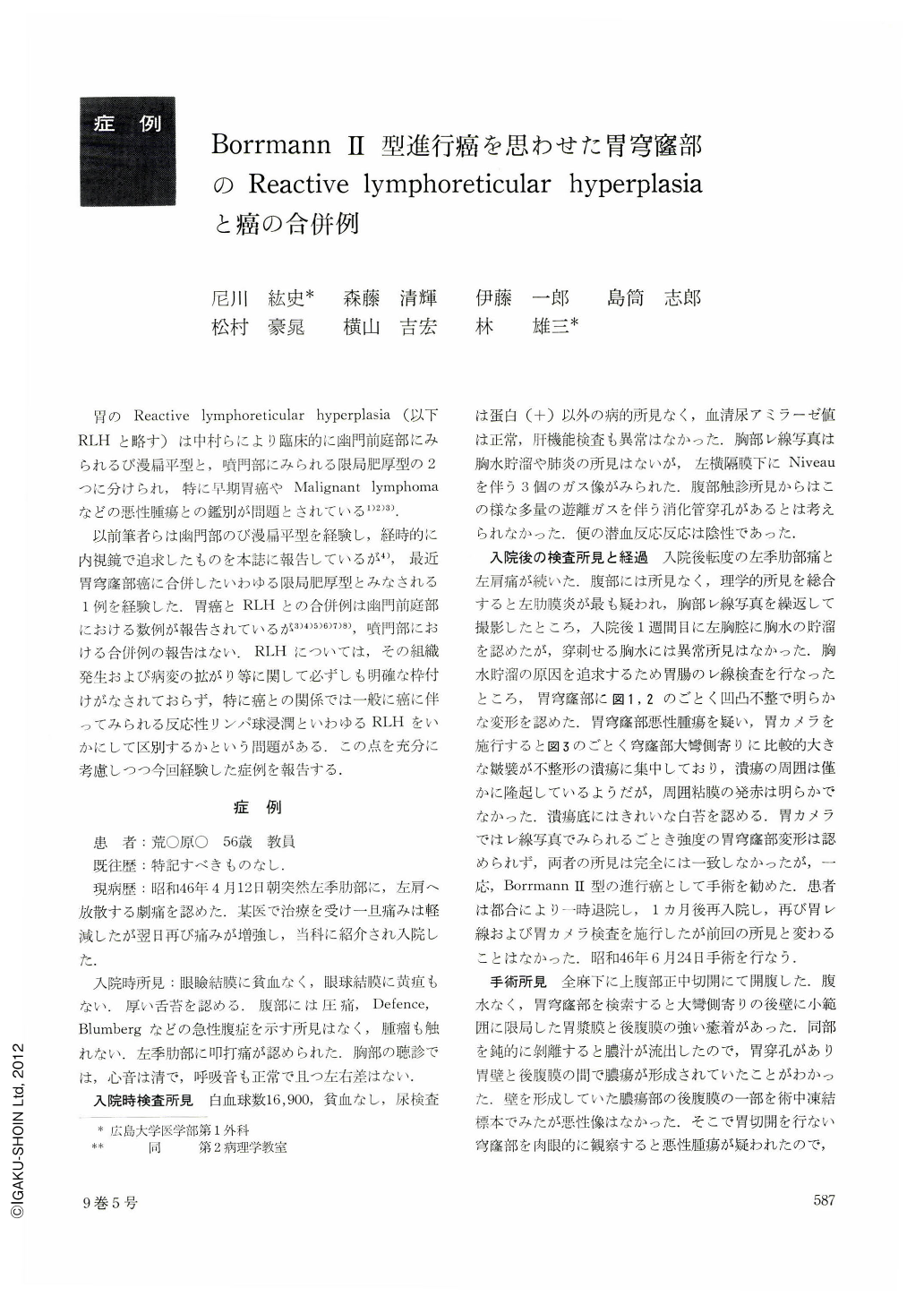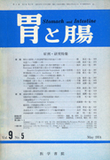Japanese
English
- 有料閲覧
- Abstract 文献概要
- 1ページ目 Look Inside
胃のReactive lymphoreticular hyperplasia(以下RLHと略す)は中村らにより臨床的に幽門前庭部にみられるび漫扁平型と,噴門部にみられる限局肥厚型の2つに分けられ,特に早期胃癌やMalignant lymphomaなどの悪性腫瘍との鑑別が問題とされている1)2)3).
以前筆者らは幽門部のび漫扁平型を経験し,経時的に内視鏡で追求したものを本誌に報告しているが4),最近胃穹窿部癌に合併したいわゆる限局肥厚型とみなされる1例を経験した.胃癌とRLHとの合併例は幽門前庭部における数例が報告されているが3)4)5)6)7)8),噴門部における合併例の報告はない.RLHについては,その組織発生および病変の拡がり等に関して必ずしも明確な枠付けがなされておらず,特に癌との関係では一般に癌に伴ってみられる反応性リンパ球浸潤といわゆるRLHをいかにして区別するかという問題がある.この点を充分に老慮しつつ今回経験した症例を報告する.
While there have been several reports of reactive Lymphoreticular hyperplasia coexisting with cancer both in the pyloric antrum, no mention has ever been made of their coexistence in the cardiac region. In this paper is presented a recently encountered case of the fornix associated with localized hypertrophic RLH(Nakamura's classification) in the same site simulating advanced carcinoma type II according to Borrmann's classification.
Roentgenogram of the stomach revealed marked deformity of the fornix, while endoscopy showed an ulcer there with adjacent mucosa hardly altered. Operation was performed under a provisional diagnosis of advanced carcinoma. At laparotomy, an abscess was found between the gastric fornix and the posterior peritoneum. There was no cancer metastasis to the lymph nodes. Resected stomach showed on its greater curvature side in the fornix a deep ulcer, 0.7 by 1.0 cm. Macroscopically it was hard to ascertain if there had been perforation. Margins of the ulcer were not raised, and a relatively large mucosal fold formed an overhanging edge well over the ulcer floor. Histologically extensive lymphoreticular hyperplasia was noticed around the ulcer. Cancer tissue was found in a part of ulcer margins. Prominent hyperplasia of Lymphoreticular tissue, seen from the mucosal layer through the muscular coat and surrounding cancer nests, was accompanied with formation of lymph follicles. The whole picture thus suggested association of RLH with cancer. The muscular coat did not show any break-up, but perforation was suggested because an abscess was formed within it and on the serosal side was seen inflammatory cellular infiltration as well as granulation tissue.
Histologically it was impossible to clarify whether cancer had preceded RLH or vice versa, although they were of the same location.

Copyright © 1974, Igaku-Shoin Ltd. All rights reserved.


